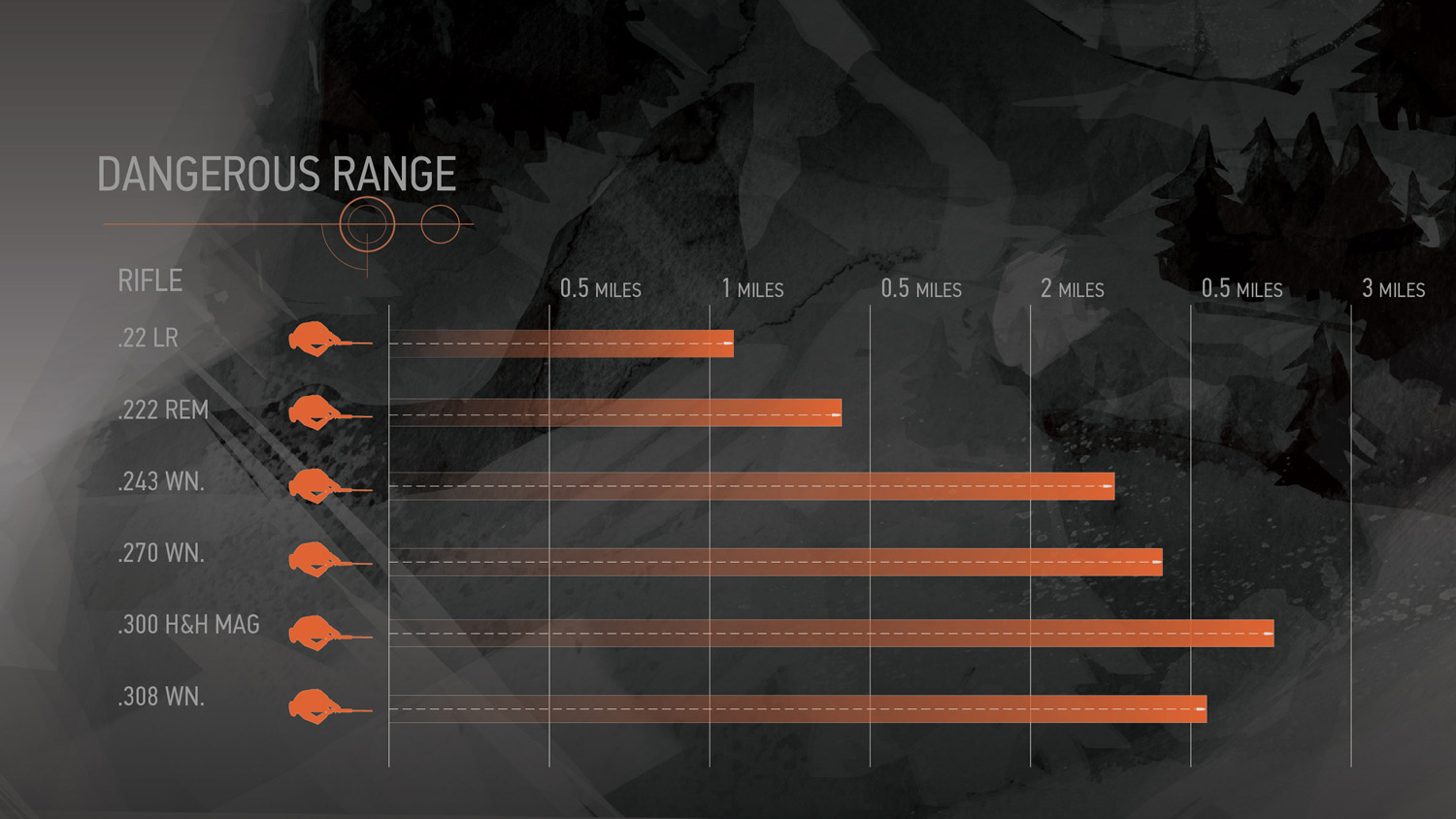How far can small shot travel? The maximum distance small shot, like birdshot, can travel depends on many factors, but it can potentially reach hundreds of yards. This article will discuss the shot pellet range, birdshot maximum range, small shot distance, small gauge shotgun considerations, effective range small shot, shotgun pellet travel, shot size and distance, small shot lethality, and answer the question, how far is shot dangerous? We’ll also delve into critical safety tips for responsible shotgun use.

Image Source: outdoorsmart.com
The Factors Influencing Small Shot Distance
Several factors determine how far small shot can travel. These elements interact, making it challenging to pinpoint an exact maximum range without considering the specific circumstances.
Shot Size
Smaller shot sizes, like #8 or #9 birdshot, have a lower mass and lose velocity faster than larger shot sizes, like #4 or buckshot. This means they won’t travel as far.
Initial Velocity
The velocity at which the shot leaves the barrel significantly impacts its range. Higher initial velocities generally result in greater distances, but this also affects recoil and pattern density.
Angle of Firing
The angle at which the shotgun is fired is crucial. A 45-degree angle typically yields the maximum horizontal distance for any projectile. Shooting straight up or down significantly reduces the potential range.
Wind Conditions
Wind can dramatically affect shot pellet travel. A tailwind will increase the range, while a headwind will decrease it. Crosswinds can also cause the shot pattern to drift significantly, affecting accuracy and potentially endangering bystanders.
Air Density
Air density plays a role. Thinner air offers less resistance, allowing the shot to travel farther. Factors like altitude, temperature, and humidity affect air density.
Gravity
Gravity constantly acts on the shot, pulling it downwards. The smaller the shot, the more quickly it decelerates and the sooner gravity brings it to the ground.
Deciphering Maximum Range: The Theoretical Limit
While pinpointing an exact number is difficult, we can estimate a theoretical maximum range for birdshot.
Estimating Maximum Range Birdshot
Under ideal conditions (45-degree angle, no wind, optimal air density), small birdshot like #8 or #9 can travel up to 300 yards or more. Larger birdshot, like #4, might reach 400 yards. However, remember that at these extreme ranges, the pellets have very little energy left.
The Reality of Shot Pellet Range
The shot pellet range listed above is a theoretical maximum. In real-world scenarios, factors like wind, terrain, and obstructions will significantly reduce this distance. Furthermore, at maximum range, the pellets will have very little kinetic energy, making them less dangerous, but still potentially harmful.
Effective Range vs. Maximum Range
It’s important to distinguish between effective range small shot and maximum range. Effective range refers to the distance at which the shot pattern still maintains sufficient density and energy to reliably achieve the desired outcome, such as humanely harvesting game.
What is Effective Range?
Effective range is usually much shorter than maximum range. For birdshot used for hunting birds, the effective range is generally considered to be 25-40 yards. Beyond this distance, the shot pattern becomes too sparse, and the pellets lose too much energy to ensure a clean kill.
Considerations for Effective Range Small Shot
- Target Size: Smaller targets require denser patterns and therefore shorter effective ranges.
- Shot Size: Larger shot sizes retain energy better and can extend the effective range.
- Choke: The choke of the shotgun barrel affects the shot pattern’s spread. Tighter chokes extend the effective range, while more open chokes shorten it.
- Game Type: The size and toughness of the game being hunted influence the choice of shot size and the acceptable effective range.
Shot Size and Distance: A Closer Look
The relationship between shot size and distance is fundamental to safe and ethical shotgun use.
How Size Impacts Distance?
Smaller shot loses velocity and energy more quickly than larger shot. This means that for a given small gauge shotgun, smaller shot sizes will have a shorter effective range.
Table: Shot Size and Approximate Effective Range (For Bird Hunting)
| Shot Size | Approximate Effective Range (Yards) | Common Use |
|---|---|---|
| #9 | 20-30 | Small birds like quail or dove |
| #8 | 25-35 | Dove, quail, clay targets |
| #7 1/2 | 25-40 | Dove, quail, clay targets |
| #6 | 30-40 | Pheasant, grouse, waterfowl (smaller ducks) |
| #4 | 35-45 | Larger ducks, pheasant |
| #2 | 40-50 | Geese, turkey |
| BB | 45-55 | Geese, predators |
Note: These are approximate ranges. Actual performance can vary depending on the specific shotgun, ammunition, and environmental conditions.
Small Shot Lethality: Assessing the Risk
While birdshot is designed for hunting small game, it’s important to acknowledge its potential for small shot lethality.
Is Birdshot Lethal?
Yes, birdshot can be lethal, especially at close range. Even at longer ranges, it can cause serious injury, particularly to the eyes or other sensitive areas.
Understanding How Far Is Shot Dangerous?
How far is shot dangerous? While the kinetic energy of individual pellets decreases with distance, they can still cause injury at considerable ranges. Even at 100 yards or more, pellets can penetrate skin and cause pain and potential infection. The risk of serious injury decreases with distance, but it’s never entirely eliminated.
Factors Affecting Lethality
- Distance: Closer range means higher energy and greater penetration.
- Shot Size: Larger shot sizes are more lethal at longer ranges.
- Clothing: Clothing can reduce penetration, but it’s not a guarantee of protection.
- Target Area: Shots to the head or vital organs are more likely to be lethal.
The Small Gauge Shotgun and Range
The small gauge shotgun, such as a .410 bore or 20-gauge, presents unique considerations regarding range.
Range Limitations of Small Gauges
Small gauge shotguns typically have lower payloads (the amount of shot they fire) and lower velocities compared to larger gauges like 12-gauge. This generally translates to shorter effective ranges.
Advantages of Small Gauges
Despite the range limitations, small gauge shotguns are popular for their lighter weight, reduced recoil, and suitability for smaller-framed shooters. They can be effective for hunting small game within their limited range.
Considerations for Small Gauge Shotgun Use
- Careful Range Estimation: It’s crucial to accurately estimate distances when using a small gauge shotgun to ensure ethical and effective shots.
- Appropriate Shot Size: Choose a shot size that is appropriate for the game being hunted and the expected range.
- Practice and Patterning: Patterning the shotgun with different loads is essential to determine its effective range and pattern density.
Safety Tips for Responsible Shotgun Use
Safe shotgun handling is paramount. Here are some essential safety tips:
- Always Treat Every Firearm as If It Is Loaded: Even if you think the shotgun is unloaded, always handle it with the same care and respect as if it were loaded.
- Never Point the Muzzle at Anything You Do Not Intend to Shoot: This is the golden rule of firearm safety. Be constantly aware of where your muzzle is pointing.
- Keep Your Finger Off the Trigger Until You Are Ready to Shoot: This prevents accidental discharges.
- Be Sure of Your Target and What Is Beyond It: This is crucial to prevent unintended harm to people, animals, or property.
- Use the Correct Ammunition: Only use ammunition that is specifically designed for your shotgun.
- Wear Appropriate Safety Gear: Eye and ear protection are essential when shooting a shotgun.
- Store Firearms Safely: Store shotguns unloaded and in a secure location, away from children and unauthorized individuals.
- Never Consume Alcohol or Drugs Before or During Shooting: These substances impair judgment and coordination.
- Take a Hunter Safety Course: These courses provide valuable information on safe firearm handling, hunting ethics, and wildlife conservation.
- Be Aware of Your Surroundings: Pay attention to other hunters, hikers, buildings, and livestock in the area.
- Never Shoot at Water or Hard Surfaces: Shot can ricochet off these surfaces, potentially causing injury.
Fathoming Potential Dangers: What Can Happen
Understanding the potential dangers associated with shotguns is crucial for responsible gun ownership.
Common Shotgun-Related Accidents
- Accidental Discharges: These can occur due to negligence, carelessness, or mechanical failure.
- Ricochets: Shot can ricochet off hard surfaces, potentially striking unintended targets.
- Stray Pellets: Pellets can travel further than expected, especially in windy conditions, and injure people or damage property.
- Self-Inflicted Wounds: These can occur due to improper handling or storage.
Minimizing Risks
- Adhere to all safety rules.
- Maintain your shotgun in good working order.
- Practice responsible gun handling techniques.
- Be aware of your surroundings.
- Educate others about firearm safety.
FAQ Section
Here are some frequently asked questions about small shot range and safety:
Q: How far can birdshot travel and still be lethal?
A: Birdshot can be lethal at close range (within 25-40 yards). Beyond that, the pellets lose energy quickly, but can still cause injury at longer ranges (up to 100 yards or more).
Q: What is the maximum range of a 12-gauge shotgun with birdshot?
A: The maximum range of a 12-gauge shotgun with birdshot can be up to 300-400 yards under ideal conditions, but the effective range for hunting is much shorter (25-45 yards).
Q: Is it safe to shoot birdshot in a residential area?
A: Shooting birdshot in a residential area is generally unsafe and often illegal due to the potential for stray pellets to cause injury or damage.
Q: Can birdshot penetrate a wall?
A: Yes, birdshot can penetrate drywall and other common building materials, especially at close range.
Q: What is the best shot size for home defense?
A: While birdshot is sometimes considered for home defense, buckshot is generally preferred because it delivers more energy on target and is less likely to over-penetrate walls. Consult local laws and regulations regarding the use of firearms for home defense.
Q: How does choke affect the range of birdshot?
A: Tighter chokes (e.g., full choke) generally extend the effective range of birdshot by keeping the shot pattern tighter for a longer distance. More open chokes (e.g., cylinder choke) result in a wider pattern that spreads out more quickly, reducing the effective range.
Q: What are the legal considerations regarding shooting range and safety?
A: Laws vary widely by location. Always check local, state, and federal laws regarding firearm ownership, use, and discharge. Be aware of any restrictions on shooting in certain areas or near buildings.
By understanding the factors that influence small shot range and adhering to strict safety protocols, responsible shotgun owners can enjoy their sport while minimizing the risk of accidents and injuries.

Hi, I’m Candace Wafford, a travel and food blogger based in Lexington, Kentucky. As a corporate traveler, I’ve had the chance to explore a lot of places, but now I’m on a mission to travel full-time. My goal? To figure out how to take my cat along for the adventure! Here at destinationdorworth.com, I share my experiences and tips on outdoor activities, travel, and of course, the best food spots I come across. I hope my blog inspires you to explore more and eat well on your journeys!
